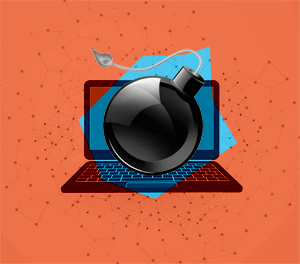

Access control (authorization) determines which users can interact with what systems and resources within your company. When access control is broken, users could send unauthorized requests to your applications. Unauthorized access to system functionality and resources creates an exploitable weakness that opens your company to harmful and potentially expensive outcomes.
Your business has several types of computer system assets, including applications, data, and hardware. Knowing your assets helps you decide on the types of controls to assign to them.
Assets can be divided into four categories:
What value do you give these assets? Which assets need the most security to protect them? Once you have identified the critical assets within your company infrastructure, you can assign access control depending on the value given to those assets.
The CIA triad is the key principle underlying the use of access control for information. As its name implies, the CIA triad includes three key aspects:
Access defines the flow of information from its user to its requested resources, such as a selected computer file. The security of that resource depends on three primary types of access control: administrative, technical and physical.
Securing computer files involves administrative and technical controls as well as physical controls. For each file on your computer system, it must be determined who gets access to it (administrative), the type or manner of their access (technical) and where access is granted (physical). Additional concerns include access control in the cloud, the IoT, and the sheer volume of data that many enterprises generate.
There are three common types of file access modes: files will be read-only, read-and-write, or execute. Each type of file will have its own particular types of access control. These access controls should be carried out throughout the system and be the standard operating procedure (SOP) for your company.
Enforcing access control follows a multi-layered protocol:
Once authentication is validated and privilege is granted, access authorization is based on the following:
Even with such protocols, files with improper access control happen. Access control is an on-going process: it is not a one-off, set-up-and-be-done-with-it event.
Access controls become vulnerable when functionality and resources are compromised due to users who do not have proper authorization to access files. Verifying function level access on every level is the best way to find vulnerabilities like navigation to unauthorized functions and missing authorization checks and balances.
Weaknesses can be found in the URL, old directories, cached pages, passwords that are not strong enough or that have not been changed when employees or employee roles change. Many times users are afraid to forget information like passwords and save them in their computer, making them easy to infiltrate.
Access can also be compromised when users fail to follow strict pathways to needed information using company protocols for retrieval. Back-door pathways can cause loss of system functionality because authorized access controls are bypassed. Users may try to manipulate access controls such as firewalls to gain access to needed information.
It is important to note that passwords are the weakest link in access control, subject to guessing and easy to create an attack from both within a company and from outside invaders.
Passwords should be 8 to 15 characters using no words, utilizing upper- and lower-case letters, numbers and company-designated special characters.
There are many ways to break access into a system, including “dictionary” attacks that scan for password matches, “brute-force” attacks run password combinations until they find a way to match one, and “birthday” attacks use “colliding” hashtags. Other attacks that can happen once access controls are breached are spoofing and phishing attacks.
Broken access controls leave the door open for such attacks. Impacts include broken day-to-day operations (denied access, downtime), data breaches, and bad PR if such breaches are publicized.
Application access policies can be broken when the functional level access is misconfigured by developers resulting in access vulnerabilities.
Denied access is arguably the most common result of broken access controls. Access can be denied in applications, networks, servers, individual files, data fields, and memory. Denied access not only causes inaccessible requested files, it can cause other security mechanisms to fail. For instance, if the access is broken on one control, other controls may be affected in the file hierarchy.
IT teams have to resolve a broken access control not only by fixing what is broken (like a bad password leading to denied access) but also considering any other potential areas that may be affected, such as controllers and business logic.
Preventing broken access control should come from a central entity that ensures all company access functionality is maintained and managed.
There are many ways to enforce and manage access usability within your company. These include:
Access control is a proactive process. Understanding what it is, how it works and following company protocol keeps broken controls in check and your company running smoothly.
About OWASP Top 10 2017 – A5 Broken Access Control


